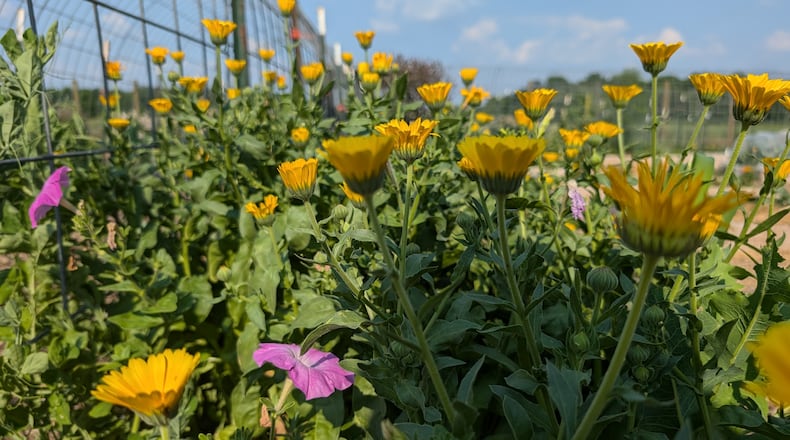Hoevel recommends structuring your garden with precise layering for maximum effect. Try bordering your geraniums or petunias with enough variety from front to back in order to attract the pollinators.
“It’s pretty much like making a fancy dinner,” she said. “If everything looks the same it’s not attractive. You want to have a big variety of color, texture, shape and height of the blossoms in order for you to attract more different kinds of pollinators. People say that don’t want bugs in their garden but they definitely do. You must have bugs.”
Credit: CONTRIBUTED
Credit: CONTRIBUTED
In addition to having a variety of flowers, the weight of the pollinators must also be taken into consideration such as a tiny green fly versus a fat bumblebee.
“You have to have sturdy flowers, lightweight flowers, tall flowers,” Hoevel said.
Butterflies are especially keen about knowing what they need from every leaf.
“A mother butterfly will land on a leaf and sense through the bottoms of her feet if that leaf contains the right balance of sugars and amino acids that her caterpillar babies can eat,” Hoevel said. “They are very particular.”
Credit: CONTRIBUTED
Credit: CONTRIBUTED
She also mentioned the current crisis within the monarch butterfly population.
“The monarch’s habitat plant is milkweed and people have gotten rid of them because they’re ugly or are crowding the fence line,” Hoevel said. “As a result, the butterflies are starving. We have seen a huge decrease in the number of flying insects over the past 30 years. It’s shocking. Those flying insects are a huge part of the pollinator population.”
Advice for first-time gardeners
If you’re a first-time gardener, Hoevel encourages you to take it simple. Start with containers.
“You don’t have to go out and dig up everything,” she said. “If you have a sunny spot, fill a container with sunflowers or zinnias — anything that’s going to be attractive to pollinators. You’re going to get them. They’re going to come and it’s going to be cool to watch. Many times, people say it’s hard work but it isn’t. Even a few pots can bring in pollinators.”
Credit: CONTRIBUTED
Credit: CONTRIBUTED
Planting vegetable flowers is also essential.
“Bumblebees love tomato flowers — they go crazy for it,” Hoevel said. “Beetles love squash or pumpkin flowers. It’s astonishing when you start to watch the different shapes, sizes and colors happen. Someone may say they don’t want their flowers to be eaten up but the point is to plant enough different kinds of flowers that the bad bugs are going to be eaten by the good bugs. Mother Nature does a great job of destruction if you just let her.”
Cox Arboretum, 6733 N. Springboro Pike, notably has designated pollinator habitat gardens in which native plants, trees and shrubs are planted together and designed to attract native pollinators.
“It’s almost like building lasagna,” Hoevel said. “You create the first layer and the next layer and repeat and repeat until you’ve created a six or eight-layer lasagna. Gardens are like that. They have the activity underground which makes the activity above ground possible because they keep the soil healthy. By keeping the soil healthy plants are healthy and if the plants are healthy the pollinators come. It’s all tied together.”
For more information, visit metroparks.org.
ENVIRONMENT & SUSTAINABILITY
Dayton Daily News readers have said they would like more content around environment and sustainability. Those with story suggestions or tips are asked to reach out to russell.florence@coxinc.com.
About the Author





